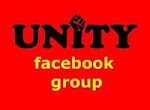Thursday 1 January 2009
It’s Time for a New Monetary System
Press Release: Global Research
25 March 2009
The Obama administration is spending hundreds of billions of dollars trying to persuade the banking system to restart lending. Federal Reserve Chairman Ben Bernanke plans to create hundreds of billions more of new bank reserves by purchasing mortgage-related debt. With Bernanke and Treasury Secretary Timothy Geithner working together, “the initiative will seek to entice private investors, including big hedge funds, to participate by offering billions of dollars in low-interest loans to finance the purchases. The government will share the risks if the assets fall further in price.” (Martin Crutsinger, AP) Finally, President Obama is taking over the distinction of being the biggest Keynesian in history with a fiscal year 2009 deficit of $1.75 trillion.
The cancer of debt grows by the day. According to Michael Hodges’ famed “Grandfather Economic Report”: “America has become more a debt ‘junkie’ than ever before,
with total debt of $57 trillion, and the highest debt ratio in history. That's $186, 717 per man, woman and child.”
With the federal bailouts of the financial system and the recession, the debt load has increased by $4 trillion in the last six months. What are we going to do with even more debt coming?
The growth in debt will be impossible for households to deal with when more then half a million jobs are still being lost per month. Impossible too for U.S. businesses when the drop-off of consumer spending reflects not only job loss but also a new propensity to actually save a portion of our earnings after the mortgage-based spending spree of the last decade.
The debt will be more possible to bear perhaps for the Treasury Department, which has benefited from investors searching for a safe haven so still being willing to buy Treasury bonds. This includes Treasury’s biggest current customer, the Bank of China.
Yet what does it say when the government can open its doors in the morning only if the Chinese give us permission? Secretary of State Hillary Clinton traveled to Beijing in February to be sure they still looked on us with favor and returned home to assure the president they did. But is this any way to run a country? Why can't the most productive nation on earth afford to pay for its own government?
The Obama economic program, which so-called progressives call “revolutionary,” will take us further away from, not closer to, real solutions. The massive new debt it creates can only be enforced by the courts, the police, and ultimately military power. Within the U.S., the authorities are preparing for civil unrest. Overseas, "dollar hegemony," the system by which nations like China continue to enable our massive debt, is increasingly unstable as the world bails on the dollar as its reserve currency.
When is anyone in authority going to utter the unutterable, which is that our financial collapse ultimately goes back to the fact that every dollar in circulation derives from a loan made by a bank to a producer, consumer, or the government, and that all these loans have attached to them a rental charge known as interest which is paid to the bankers’ monopoly? When will someone admit that the government’s economic recovery plan is a welfare program for Wall Street billionaires?
We live and work under a debt-based monetary system that has been in force since Congress passed the Federal Reserve Act of 1913. It’s how the system works. The government goes into debt, and the banking system then uses it as a reserve base for lending to the public.
It wasn’t always this way. In the 19th century, until the Civil War, the government lived within its means. President Thomas Jefferson balanced the federal budget for eight consecutive years, and President Andrew Jackson paid off the national debt.
Back then the government issued currency based on gold and silver, and the U.S. mint stamped precious metals into coinage for anyone who brought it through the door. Local commerce was fueled by a system of state and local banks operating on the “real bills” doctrine. Inflation was virtually unknown, and unpaid debt led swiftly to bankruptcy and a sheriff’s sale.
When the Civil War began, President Lincoln needed money fast. The New York bankers offered outrageous terms: interest at 24-34 percent. So Lincoln was authorized by Congress to print and spend Greenback money directly into circulation. Contrary to later propaganda, the Greenbacks were not inflationary. They were upheld by the Supreme Court as constitutional and remained in circulation until the early 20th century. They even spawned the Greenback Party that elected members of Congress and ran candidates for president.
But the bankers, by now centered on Wall Street, gained a foothold with the National Banking Acts of 1863 and 1864, where the banks were allowed to purchase Treasury bonds as a lending reserve. Currency issued by the state and local banks with their hard money reserves were taxed out of existence.
In 1913 the bankers’ trap snapped shut when the Federal Reserve System came into existence. After World War I, the currency inflated so much that the value of both the Greenbacks and coinage were destroyed.
A monetary system based on bank lending means constant cycles of inflation and deflation. The banks create these financial bubbles then destroy them, always to their profit. In the 19th century, the deflations were called “panics.” The Great Depression was a bank-created panic on an unprecedented scale. The collapse of 2008-2009 is the panic we’re in now, but with plenty of assets on the market at fire-sale prices for those rich enough to cash in. For instance, there was a lot of hand-wringing when Citigroup’s stock dropped to $1 a share. But those who could still buy-in saw their holdings triple in value when the stock rose to $3 a share a few days later.
The solution is not to restart huge amounts of bank lending in order to create new bubbles. Unfortunately, the Obama budget is an attempt to create such a bubble based on Treasury securities. But this bubble too will likely collapse, because there is no economic engine on the horizon strong enough to pay the debt that will be used to inflate it. The next collapse could even lead to a world war if China and other creditor nations, possibly including those of Europe, decide to enforce their claims against us.
But economists, politicians, and others who say there is no immediate solution lie. They just don’t want to tell us what the solution is.
It’s to get rid of the debt-based monetary system altogether and return to one controlled by our representative government where a substantial amount of money is spent directly without borrowing or taxation. A Greenback system for the 21st Century is contained in the draft American Monetary Act developed by the American Monetary Institute and briefed to a number of members of Congress and congressional staffers.
A Greenback-type currency would be regulated to support the needs of the real producing economy, not bank speculation, and could be used to pay off the national debt, supplement taxes to pay federal expenses, capitalize a new federal infrastructure bank, or fund alternative energy R&D.
A currency based on real U.S. money would replace debt-derived Federal Reserve Notes. It doesn't matter whether that currency is paper, gold, or electronic entries. What is important is that it exists in the right amount to conduct the business of the nation, is non-counterfeitable, is not misused for speculation, and does not have debt or interest attached to it. The Federal Reserve would remain as a processor and clearinghouse, but not a bank of issue.
Greenbacks could also be used for a basic income guarantee for citizens that would restart the economy at the grassroots level much more effectively than government top-down job creation based on more Treasury deficits. The need for consumers to borrow from banks or use credit cards even for necessities like groceries and health care would sharply decrease.
I have proposed such a program through the Cook Plan that would provide citizens with a dividend in the form of vouchers in the amount of $1,000 a month. The vouchers could be used to capitalize a new network of community savings banks that would lend at the local level.
There is a good chance that the American Monetary Act will be introduced during the current session of Congress. It should be supported by anyone who cares about the future of our nation more than bankers’ profits.
Richard C. Cook is a former U.S Treasury analyst who also worked in the Carter White House and for NASA and writes on public policy issues. His new book is We Hold These Truths: The Hope of Monetary Reform (Tendril Press 2009). His website is http://www.richardccook.com/ He is a member of the U.S. Basic Income Guarantee Network and has been an adviser to Congressman Dennis Kucinich and the American Monetary Institute http://www.monetary.org
Labels:
banks,
economic crisis,
new monetary system,
US Fed
Posted by
Vaughan
at
Thursday, January 01, 2009
Subscribe to:
Post Comments (Atom)







1 comment:
The strongest and most stable currencies are based on gold. Since the Fed came into being in 1913, the real value of the U.S. dollar has dropped by 95%. It's time to audit (and then abolish) the Federal Reserve.
Post a Comment